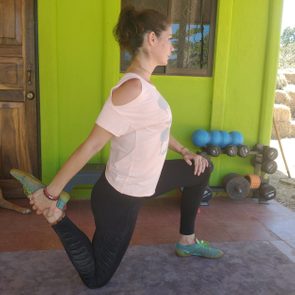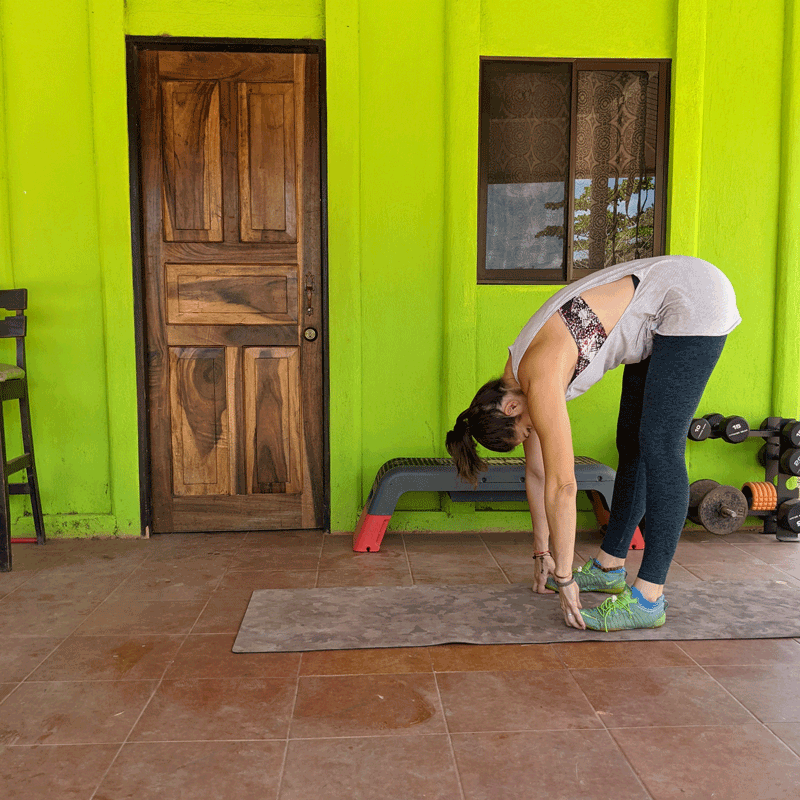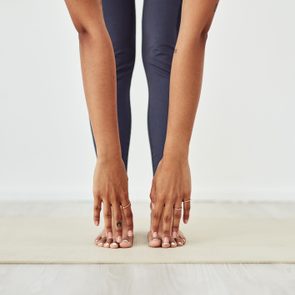4 Stretches That Help Your Rotator Cuff
Updated: Jun. 30, 2021
Even if you're not an athlete, your shoulder's rotator cuff may be overworked and under-stretched. Add these exercises to your regular stretching routine to help prevent pain and injuries.
Save your shoulders
Maybe you’ve heard the phrase “rotator cuff” thrown around, and you generally understand it’s associated with your shoulder joint. But unless you’ve had reason to think much about this small group of muscles (in other words, you’ve had pain or a rotator cuff injury), you may not know much about it.
The thing is, your rotator cuff isn’t a single muscle, but rather a group of four muscles that surrounds the shoulder joint. These muscles work together to control the movement of the shoulder—the least stable joint in your body—helping to prevent excess movement, dislocations, and other injuries. The rotator cuff is also responsible for helping with rotation and abduction of the shoulder, which, given the muscle groups’ name, shouldn’t come as a great surprise.
You use your rotator cuff constantly
And while you may have heard of athletes, like volleyball, baseball, or tennis players injuring their rotator cuffs due to the overuse they place on these muscles with the throwing, swinging, and hitting motions, even desk jockeys can end up with rotator-cuff related problems. This is because your shoulders are involved in practically all upper-body movements—even “movements” you don’t think about like whether you’re sitting with good posture or you’re slouching in front of your desk.
Yes, slouching counts as a “movement,” and your rotator cuff is involved, as its job is to stabilize your shoulder joint in whatever position you have it in. “Rotator cuff muscle tightness is typically caused positionally by the shoulder and thoracic spine, and results from the simultaneous deconditioning of the rotator cuff and overuse of synergistic muscles,” says Jake Harcoff, the head coach and owner of AIM Athletic in British Columbia, Canada. “An example is the forward rounding position of shoulders seen in people with poor posture. In this case, prolonged bouts of sitting or slouching are causing the muscles like the pec minor to tighten while the posterior muscles of the shoulder capsule become lax and deconditioned.”
And as one muscle group tightens, and another deconditions, you’re left with muscle imbalances that are all too common in the four small muscles of the rotator cuff (the supraspinatus, infraspinatus, teres minor, and subscapularis). And because they’re often neglected during strengthening and stretching programs, a snowball effect can lead from imbalance to irritation to pain to more serious injury.
(Try these shoulder exercises you can do at home.)
Stretching can help
Left unmanaged, Harcoff points to shoulder impingements and biceps tendonitis as common outcomes of chronically tight rotator cuff muscles. And because of the role of poor posture in rotator cuff problems, he emphasizes that it’s not just athletes who need to prioritize stretching this muscle group. “Due to the sheer amount of time typically spent behind desks, driving, and at computers, everyone can benefit from stretching their rotator cuff muscles. That includes those who aren’t experiencing any pain related to overuse injuries.
Try these four rotator cuff stretches
While some general shoulder stretches can help stretch the rotator cuff, it’s also beneficial to perform stretches that do a better job of isolating the small muscle groups. Try including these moves in your daily stretching routine.
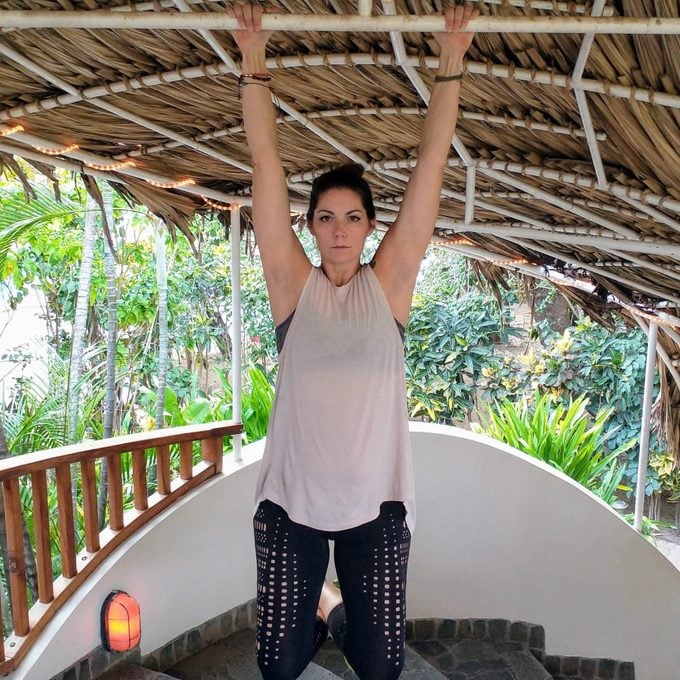
Passive dead hang
The passive dead hang is exactly what it sounds like — simply hanging from a pull-up bar. The benefit to the rotator cuff is that the dead hang, when done correctly, encourages good spinal alignment and shoulder positioning, which can help strengthen and stretch the rotator cuff muscles. Strengthen, because these muscles must work to help hold the hanging position with proper alignment. Stretch, because if your shoulders and spine are used to slumping forward, and your rotator cuff muscles have become tight as a result, this stretch also helps lengthen the shortened muscles.
Grab hold of a pull-up bar with your hands positioned slightly wider than shoulder-width apart, your palms facing forward. Roll your shoulders back and engage your core so your body hangs with good posture — your ears aligned with your shoulders and hips. You can bend your knees and “shorten” your body’s length to help control the hang, or you can hold your feet together, tighten your glutes, and position your feet slightly in front of your hips. From here, simply allow your body to hang, relaxed, breathing deeply. Hold the position for 15 seconds to start, completing four sets. With time, you can increase your hang time, aiming for 60 seconds per hang.
(What you should know about static vs. dynamic stretching.)
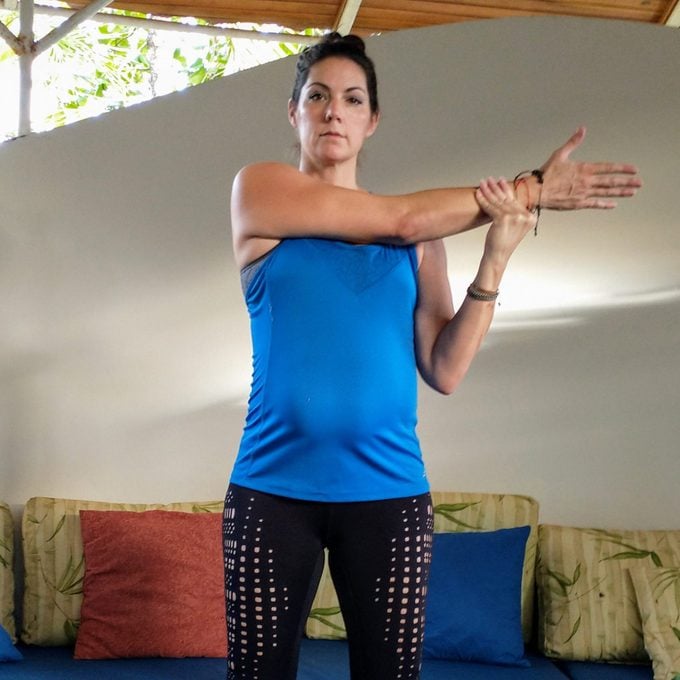
Cross-body stretch
Remember, your rotator cuff muscles are responsible for assisting with internal and external rotation, and the cross-body stretch helps maintain or improve internal rotation of the shoulder joint.
Stand tall with good posture, your feet roughly shoulder-distance apart. Engage your core and draw your left arm across your body in front of your chest, your elbow extended. Grasp your left forearm with your right hand to pull your left arm closer to your body. Stop when you feel a good stretch through the back and outside of your left shoulder and hold the position for 30 seconds. Release the stretch and repeat two more times before switching sides.
(Improve your posture with these stretches.)
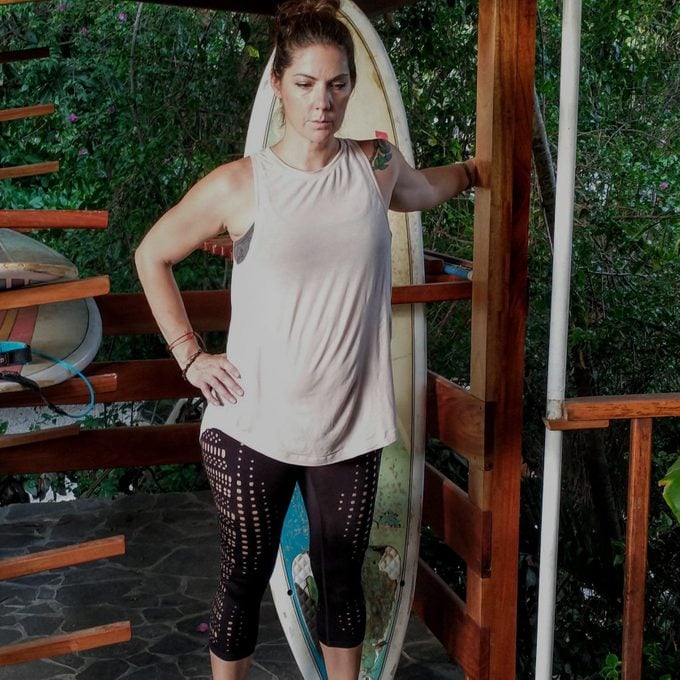
Unilateral doorway stretch
The doorway stretch focuses on maintaining or improving external rotation of the shoulder joint. You can perform this stretch unilaterally (focusing on one arm at a time) or bilaterally (stretching both arms simultaneously).
Stand in a doorway or next to a sturdy, vertical object. Place your left palm on the back side of the doorframe or object at or slightly below shoulder-height with your elbow bent. If you want more stability, you can place your entire forearm on the door frame (this is particularly helpful if you have very tight shoulders). With your feet roughly shoulder-distance apart, your core engaged, lean forward slowly, pressing your chest and shoulders forward until you feel a stretch at the front of your left shoulder and chest. Hold the position for 30 seconds. Relax, then repeat two more times to the left side before switching arms.
(Learn these reasons for pain between your shoulder blades.)
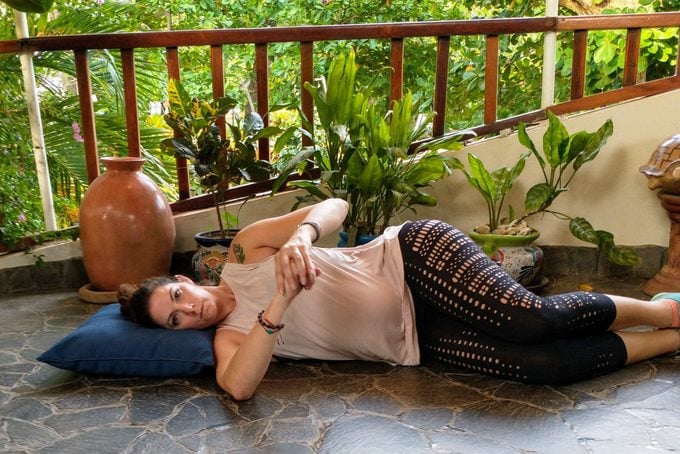
Sleeper stretch
The sleeper stretch is another stretch that helps maintain or improve internal rotation of the shoulder.
Lie on your right side on a mat, your knees bent and positioned in front of your torso, your legs stacked on top of one another. Use a pillow to support your head and neck to maintain proper spinal alignment. Extend your right arm directly in front of your shoulder and bend your elbow at 90-degrees so your right fingers are perpendicular to the floor, pointing toward the ceiling. Make a fist with your right hand. Keeping your torso and your right arm steady, grab your right fist with your left hand, and use your left hand to guide your right hand down toward the floor. Stop when you feel a stretch on the back and outside of your shoulder and hold the position for 20 seconds. Release the stretch, then repeat two more times before switching arms.
(These everyday movements could cause pain or injury.)




















